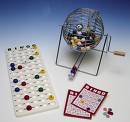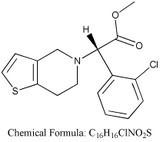E-Pass v. 3Com, Palm, Visa, et al. (Fed. Cir. 2009)
This litigation began in 2000 when E-Pass sued for infringement of its electronic credit card patent. Patent No. 5,276,311. The district court granted summary judgment of non-infringement, which was affirmed on appeal. The district court then found the case exceptional under 35 U.S.C. § 285 and awarded attorneys’ fees to the defendants. E-Pass appealed that judgment. In a counter-motion, PalmSource also asked for attorneys fees for the appeal – arguing that the appeal was frivolous as well. The Federal Circuit affirmed the trial court without opinion, but wrote an extensive opinion finding a frivolous appeal.
Frivolous Appeal: An appeal is frivolous if the appellant fails “to present cogent or clear arguments for reversal.” In addition, the court may award sanctions based on misconduct or misrepresentations to the appellate court.
Here, the court found that E-Pass did not present any specific argument relating to the attorney fees for one of the defendants – PalmSource. Instead, the plaintiff-appellant focused on its case against the other defendants. E-Pass did not “challenge any finding of the district court relating to litigation misconduct in the case against PalmSource.” Furthermore, E-Pass did not change its strategy even after being notified of PalmSource’s frivolous appeal argument. Adding to E-Pass’s problems are “multiple misrepresentations” to the Federal Circuit – primarily in referring to the defendants collectively when each stood in different situations. Perhaps the straw-that-broke-the-camel’s-back was E-Pass’s use of the quote that “a trial court may only sanction the patentee if both the litigation is brought in subjective bad faith and the litigation is objectively baseless.” With the help of PalmSource and the CAFC clerks, the court easily found that a critical exception to the sanctions rule had been left off. Notably, the full quote reads: “Absent misconduct in the litigation or in securing the patent, a trial court may only sanction the patentee if both the litigation is brought in subjective bad faith and the litigation is objectively baseless.”
Sanctions and attorney fees granted against E-Past and its counsel, jointly and severally.
In dissent, Judge Bryson saw serious misconduct, but would not have imposed sanctions.
Accepting that in those regards E-Pass’s briefs on appeal fell short of the standards we expect of counsel in this court, I nonetheless conclude that the shortfall is not so egregious as to call for the imposition of sanctions.


 TALtech v. Esquel Apparel (
TALtech v. Esquel Apparel ( Eli Lilly v. Zenith Goldline (Fed. Cir. 2006)
Eli Lilly v. Zenith Goldline (Fed. Cir. 2006) Plumtree v. Datamize (
Plumtree v. Datamize ( In re Hays (Fed. Cir. 2006) (Nonprecedential)
In re Hays (Fed. Cir. 2006) (Nonprecedential)
 Planet Bingo v. Gametech (Fed. Cir. 2006).
Planet Bingo v. Gametech (Fed. Cir. 2006).  Sanofi v. Apotex (Fed. Cir. 2006)
Sanofi v. Apotex (Fed. Cir. 2006)